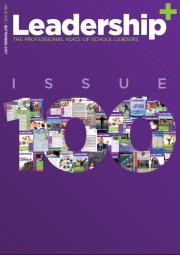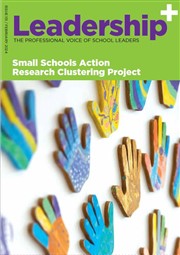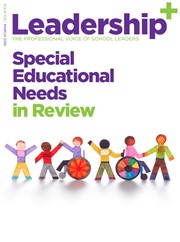E-Scéal 83: SEN Allocations
- Published: 10 May 2005
Below are the details available from the DES on the new general allocation system for SEN. As soon as clarification is received on a number of issues, we will post further information.
John Curran - PRO IPPN
Press Release - 8 May 2005 DES
Hanafin announces 660 extra special needs Teachers for primary schools from September 2005.
Means 1100 additional teaching posts for special needs children since last June.
The Minister for Education and Science Mary Hanafin, T.D., today announced 660 extra special needs teaching posts will be put in place in primary schools from next September. Announcing these new posts, Minister Hanafin said these teachers will "ensure that children will have access to resource teaching support as soon as they need it, without having to wait for an individual application to be processed."
Each primary school will be allocated resource teaching hours, based on their enrolment figures, to cater for the needs of pupils with high-incidence special educational needs, such as dyslexia. Resources for these pupils were previously only considered on an individual application basis, supported by psychological assessments. For many parents this was a lengthy and expensive process.
The model reflects the fact that pupils with more general learning difficulties are distributed throughout the education system, while taking into account the differing needs of the most disadvantaged schools and the evidence that boys have greater difficulties than girls in this regard.
Pupils with more serious special needs, such as autism, will continue to be catered for on an individual application basis, as these children are not equally distributed throughout the school system. However, the commencement of operations by the National Council for Special Education last January and the recruitment of 71 local special needs organisers throughout the country should greatly enhance the speed of response to such applications.
The introduction of this new system will involve the provision of an estimated additional 340 permanent posts in primary schools from September next.
A further 320 posts are being provided on a temporary basis to facilitate the transition to the new system. Children who have previously been given an individual allocation will not lose out as a result of this model as 320 posts are being provided to ensure continuity of service until those children leave the primary school.
The new model replaces that which was notified to schools in June 2004, which has been reviewed to take account of difficulties that it may have caused for smaller schools.
The Minister pointed out that this was a further strong demonstration of the Government commitment to special needs. The 660 additional posts announced today brings to 1100 the number of additional teaching posts for special needs authorised since last June.
Minister Hanafin said she was "delighted to be able to get such significant resources for special needs provision in primary schools. Prioritising special needs and disadvantage has been top of my agenda since becoming Minister for Education and Science. I also want to acknowledge the support of the Minister for Finance Brian Cowen and the Government in making the necessary resources available."
ENDS
8th May 2005
Appendix
Background to Model and Details of Model
The decision to allocate these additional teaching posts follows a review of a proposed new resource allocation system requested by Minister Hanafin. An allocation system proposed last year provided for the allocation to schools of teachers on a permanent basis for the pupils concerned to obviate the need for individual applications from schools. The advantages of the new system are that:
- It puts resources permanently in place in schools and thereby facilitates flexible and early intervention;
- It reduces the need for individual applications and supporting psychological assessments for pupils in the categories involved;
- It puts resources in place on a more systematic basis thereby giving schools more certainty about their resource levels;
- *Greater flexibility is given to school management in the deployment of resources
- Greater levels of certainty about resource allocations facilitates better planning within the system both at central and local level, leading to more effective and efficient delivery of services.
Minister Hanafin had requested a review of the system to take account, in particular, of the impact on small and rural schools. Following revision the appointment ratios are being improved with particular improvements for those schools.
The General Allocation System will operate as follows:
1. Small schools
To alleviate the impact of the original model on smaller schools, the point at which the smaller schools can appoint their first post has been significantly reduced. As differing Pupil teacher ratios apply to Boys school, Mixed schools and Girls schools, for the purposes of the General Allocation System, a small school in the case of boys schools as a school with less than 135 pupils; in the case of a mixed schools as a school with less than 145 pupils and in the case of a girls school as a school with less than 195 pupils.
- small Boys schools will qualify for their first post at 100 pupils.
- small Mixed schools will qualify for their first post at 105 pupils.
- small Girls schools will qualify for their first post at 150 pupils.
[However no additional resources will be allowed to small Boys schools as defined on the basis of any enrolment above 100; in the case of small Mixed schools as defined on the basis of any enrolment above 105 or, in the case of small Girls schools, for any enrolment above 150.]
2. Other Provisions
- Boys' schools with 135 pupils or more:
1st post at 135: 2nd post at 295; 3rd post at 475, 4th post at 655 and so on.
It should be noted that schools would qualify for a pro rata part of a post for pupil numbers between the 1st and 2nd post, the 2nd and 3rd post and so on. In the case of a Boys schools with 215 pupils, the school would get 1.5 posts.
- Mixed schools with 145 pupils or more:
1st post at 145; 2nd post at 315; 3rd post at 495, 4th post at 675 and so on. - Girls' schools with 195 pupils or more:
1st post at 195; 2nd post at 395; 3rd post at 595; 4th post at 795 and so on. - Disadvantaged schools
1st post at 80; 2nd post at 160; 3rd post at 240; 4th post at 320 and so on.
Related E-ScÉals
E-Scéal 93 - Further Clarifications relating to queries on General Allocation Model
E-Scéal 89 - Hours required for SEN posts
E-Scéal 88 - SEN: Clarification sought by IPPN on your behalf



















































